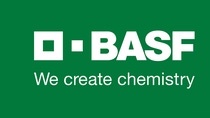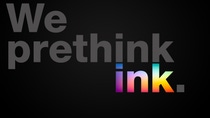Dispersions & Resins
“We need to increase awareness - that's why we have established PRETHINK INK”

Tjalle Hijlkema, Marketing Manager for flexible packaging industry at BASF
Tell us the story of the PRETHINK INK network so far.
Although we have been talking about water-based inks for over 15 years now, the story of PRETHINK INK started just last year, when BASF attended an exhibition for the printing industry in Spain. We ran a round-table discussion with an ink maker, a machine maker, and several environmental organizations. It was a success and started a lot of good conversations about inks.
We considered rolling out this approach further: by taking it to Interpack, one of Europe’s largest packaging exhibitions, and by producing a series of videos. Then, in the middle of all of this, the coronavirus reared its head. We had to devise a new way to use our ideas in a remote, virtual setting. That is how we came up with the concept of the PRETHINK INK network: so we could continue to share knowledge and raise awareness of water-based inks for flexible packaging across the entire industry.
We considered rolling out this approach further: by taking it to Interpack, one of Europe’s largest packaging exhibitions, and by producing a series of videos. Then, in the middle of all of this, the coronavirus reared its head. We had to devise a new way to use our ideas in a remote, virtual setting. That is how we came up with the concept of the PRETHINK INK network: so we could continue to share knowledge and raise awareness of water-based inks for flexible packaging across the entire industry.
If the conversation has been going for 15 years, why is now the right time to really push forward with the transition to water-based ink?
When this technology emerged, resins were not yet versatile enough for many applications. This was reflected in the performance of printing inks and printing processes. Over the last decade, however, all the actors in the value chain have gone through a lot of development processes and innovations, and this includes improvements to water-based technology.
Today we are finally at a point where we can say that the quality of a water-based ink is at the same level as a solvent-based ink, offering great printability and resolubility properties. Thanks to the rise of ‘hybrid’ machines, printers can use them a lot more easily too. Another aspect that should not be underestimated is the fact that printers and converters need to comply with increasing and constantly changing environmental legislation.
That means the issue has been turned on its head and market acceptance is changing. Since solvent-based inks are the default, the question has long been, “Why should we use water-based inks?” Now, we can say, “Why don’t we use them?” The printed result is of the same quality, and water-based inks are the more sustainable solution. So why not? The reason is that the advantages of today’s water-based inks are still widely unknown. That’s what we want to change. That’s why we have established PRETHINK INK.
Today we are finally at a point where we can say that the quality of a water-based ink is at the same level as a solvent-based ink, offering great printability and resolubility properties. Thanks to the rise of ‘hybrid’ machines, printers can use them a lot more easily too. Another aspect that should not be underestimated is the fact that printers and converters need to comply with increasing and constantly changing environmental legislation.
That means the issue has been turned on its head and market acceptance is changing. Since solvent-based inks are the default, the question has long been, “Why should we use water-based inks?” Now, we can say, “Why don’t we use them?” The printed result is of the same quality, and water-based inks are the more sustainable solution. So why not? The reason is that the advantages of today’s water-based inks are still widely unknown. That’s what we want to change. That’s why we have established PRETHINK INK.
Is there a success story you’re most proud of so far?
Not just one – everyone who has joined the network so far is making a difference, personally and as a company.
Quimovil is an ink maker that only produces water-based inks because they are convinced this is the most sustainable route. Silbo, a printer, made the change to using water-based ink five or six years ago because they saw the benefits for the whole value chain. Packaging producer NNZ is having conversations with brand owners and helping them rethink their packaging choices. Machine manufacturer Comexi now sells more and more ‘hybrid’ machines that can print both solvent- and water-based. As a result, Comexi’s customers can move their current jobs to water-based ink without troubles.
Everyone is playing an important part in creating awareness and helping us take steps into the future.
Everyone is playing an important part in creating awareness and helping us take steps into the future.
Do you have any overall aims for the network?
We know the market for printing on flexible packaging will continue to grow, and we want to increase the market share of water-based inks in flexible packaging. But we are realistic about it: I know it is not going to happen today. I couldn’t even tell you where we will be in 10 years. There is a lot of work still to do.
Consider the changes paper-based packaging has already undergone. Half a century ago, solvent-based printing on paper and corrugated board was standard. The following years saw a gradual change to water-based. At first, nobody wanted to do it, and now, obviously, nobody wants to go back!
I think the flexible packaging sector is in a similar position now. It will take time and a change of perception – a paradigm shift – before we see significant results. But once the industry has made that change, we will stick to it. Ink-makers, OEMs, packaging makers and brand owners will all notice the benefits.
Consider the changes paper-based packaging has already undergone. Half a century ago, solvent-based printing on paper and corrugated board was standard. The following years saw a gradual change to water-based. At first, nobody wanted to do it, and now, obviously, nobody wants to go back!
I think the flexible packaging sector is in a similar position now. It will take time and a change of perception – a paradigm shift – before we see significant results. But once the industry has made that change, we will stick to it. Ink-makers, OEMs, packaging makers and brand owners will all notice the benefits.
Why should other stakeholders join PRETHINK INK and become part of the movement?
PRETHINK INK is an open network. We want partners from the whole value chain to get involved. It is clear to me that, if we want to bring about real change, we at BASF cannot do it on our own. Nor can any one ink maker, or machine maker, or printer, or brand-owner. But together, if we all support this technology, we have the power to achieve real and meaningful results.
Do you have any advice for companies considering switching to water-based inks?
We know that solvent-based inks are still by far the most commonly used. But today, water-based inks give the same quality, they offer obvious benefits in terms of sustainability such as lower environmental impact, and they are healthier for the staff at the print shop, at a comparable price level. They are also not subject to environmental regulations on solvent emissions and do not require explosion-proof equipment. They offer an excellent balance between business and sustainability goals. So why not go for it?
We know that solvent-based inks are still by far the most commonly used. But today, water-based inks give the same quality, they offer obvious benefits in terms of sustainability such as lower environmental impact, and they are healthier for the staff at the print shop, at a comparable price level. They are also not subject to environmental regulations on solvent emissions and do not require explosion-proof equipment. They offer an excellent balance between business and sustainability goals. So why not go for it?
What do you think the future holds for the packaging industry?
The use of flexible packaging is only going to grow over the next 30 years. As its volume increases, it is up to all of us in the flexible packaging industry to ensure sustainability. We should explore every avenue to make that a reality: compostability, recyclability, ink formulation. From an environmental perspective, all of these have an important role to play.
So let’s start the work! I am very much looking forward to the discussions our initiative will generate. And if you have been reading and wondering whether this network could be a good fit for you, please get in touch!
So let’s start the work! I am very much looking forward to the discussions our initiative will generate. And if you have been reading and wondering whether this network could be a good fit for you, please get in touch!
A few facts about our interview partner:
Name: Tjalle Hijlkema
Role: Marketing Manager for the flexible packaging industry
Company: BASF
Specialisms: High-quality raw materials for the printing of food packaging, flexible packaging, corrugated board, paper or paperboard, labels, magazines or catalogs
Describe your role in 10 words: Helping ink-makers, OEMs, printers and brand-owners become more ‘planet and human safe’















